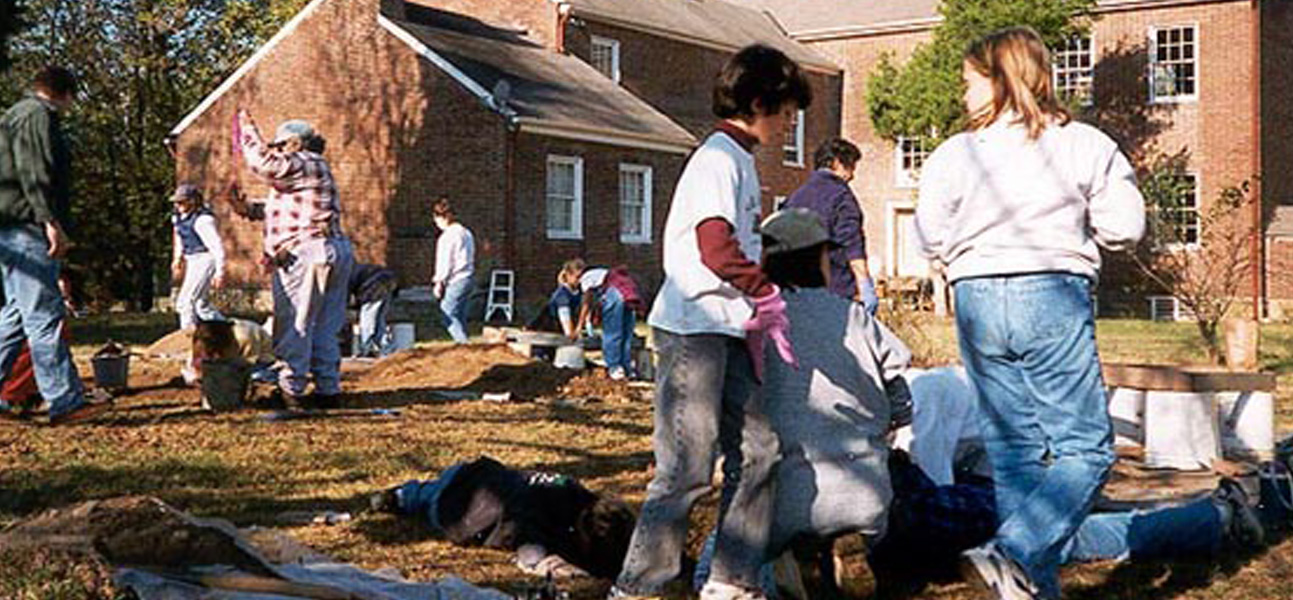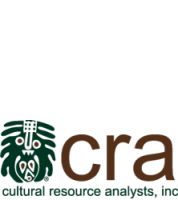
03 Jul Sayre School, 1999-2000
The third year program at Waterwild began with a presentation on a review of the goals and methodology of historical archaeology, and a slide show depicting the types of archaeological features that might be encountered at Waterwild. The first year’s investigations identified the backlot as the most likely area for outbuildings. Artifact concentrations and remote sensing readings had suggested the presence of structures in this area. The second year excavations provided evidence for the presence of structures, which included nails, window glass and limestone rubble. As the previous year’s students had recommended at the end of their field season, additional excavations were needed at the back of the houselot to identify the location and function of outbuildings. The third year’s fieldwork concentrated on four units at the back of the houselot, continuing the attempt to identify and delineate outbuildings.
Upon arrival to the site, the students in each of the three groups were given a tour of the site area. The architecture of the house, changes in the landscape and the previous year’s investigations, and findings were all topics for the discussion that preceded the excavation. Included in the discussion was the correct way to trowel and shovel skim, and the importance of note taking. Inspecting floor plans and profile walls for soil changes denoting archaeological features were also discussed.
Putting the Pieces Together
The results of the third year of fieldwork were positive to say the least. Each group saw the excavations gradually unfold, and the pieces of the archaeological puzzle slowly emerge with information on possible outbuildings. Two of the four units yielded limestone rubble above shallow deposits of ashy soil. At the base of the ash was hardened subsoil, which appeared to have been slightly burned in places. Two units placed in depressions encountered two features. The first designated feature contained late-nineteenth-century fill, including parts of a toilet, general domestic debris and coals and cinders. Feature 2 was a deep feature filled with ashy soil, providing abundant faunal remains and domestic artifacts of the early nineteenth century. The excavation was expanded, attempting to find the edges of Feature 1 with additional units. Another unit was placed on a high topographic rise west of the opened units. This area yielded limestone rubble and architectural debris dating to the early nineteenth century.
Interpreting Features
Each student group witnessed and participated in the discussions about the possible interpretations for what was uncovered archaeologically. Students from each unit discussed their areas and presented their findings to the group as a whole, providing new information and suggestions for future work. The archaeological investigations have identified what appear to be wall or chimney remnants of one or more structures. Feature 2 appears to be an early-nineteenth-century root cellar, filled with fireplace ash and domestic debris. Feature 1 is a large deep depression filled with later nineteenth-century debris. This feature is currently posited to be a large cellar. As the kids are fully aware, these interpretations are only possible answers that can be accurately answered with more fieldwork. Of critical importance for this field season, was the student’s exposure to intrusive features. These archaeological examples provided CRA employees the opportunity to discuss the concepts of stratigraphy and site formation processes to the Sayre kids. Valuable lessons were learned again. The site was closed each day with the Sayre Science High Five, and the students left each day with an understanding of how the three years of investigations had, through gradual but deliberate steps, accomplished many of the goals defined three years earlier.
It is our hope that this experience will encourage other CRM firms to devote some of their time and resources to similar projects and that our experiences will help them in planning their own projects. The public’s participation in archaeology increases their understanding and support of archaeological projects. Opportunities such as Waterwild are beneficial for all involved and we look forward to many more such educational experiences.



